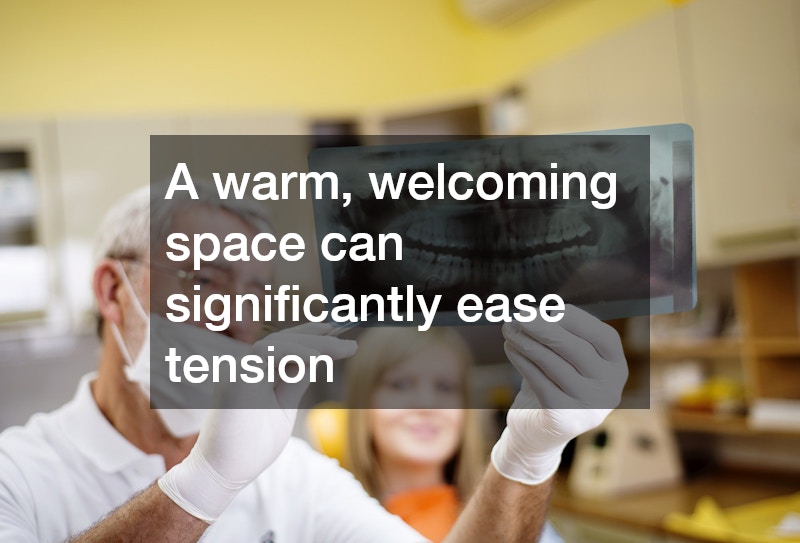
There are various strategies employed by local dentists to assist patients in overcoming dental anxiety. By understanding these methods, individuals can feel more at ease during their dental visits and improve their overall oral health.
Understanding Common Causes of Dental Anxiety
Dental anxiety is a prevalent issue that affects many individuals, and its origins can be traced to various factors. For some people, previous traumatic experiences associated with dental visits significantly contribute to their feelings of fear.
Such experiences can stem from painful procedures, harsh treatment methods, or negative encounters with dental staff that leave a lasting emotional impact.
Additionally, fear of pain is a major cause of anxiety for patients. The anticipation of discomfort during treatments, even simple ones like cleanings, can lead to significant dread. This fear is often amplified by the stories shared by friends and family or media portrayals of dental procedures gone wrong that may exaggerate the pain involved in dental work.
Genetic predisposition to anxiety can also play a role in how individuals approach dental appointments. Some people may inherently have a higher sensitivity to stress or a tendency to worry, causing them to experience increased anxiety levels in unfamiliar settings, such as a dental office. Understanding these roots of anxiety is critical for both patients and dentists to effectively address and manage this pervasive issue.
Creating a Calming Environment
Creating a calming environment in a dental practice is essential for alleviating patient anxiety. Local dentists are increasingly focusing on the aesthetics of their offices, using soothing colors, comfortable furnishings, and gentle lighting that contribute to a serene atmosphere. A warm, welcoming space can significantly ease tension and help patients feel more relaxed before their treatment begins.
Music and aromatherapy are also effective tools employed by dental offices to promote relaxation. Many practices incorporate soft, calming music that can distract from the sounds often associated with dental procedures. Similarly, the use of pleasant scents, such as lavender or chamomile, can create a more tranquil environment, reducing anxiety levels even before the patient is seated in the dental chair.
Moreover, local dentists frequently ensure that their staff is trained to create a comforting atmosphere through friendly interactions. Greeting patients with a smile and engaging in casual conversation can help establish a rapport, making patients feel valued and understood. When patients perceive their providers as empathetic and supportive, their overall anxiety tends to decrease, improving their dental experience.
Communicating Effectively With Your Dentist
Effective communication is a cornerstone in addressing dental anxiety among patients. Dentists practice open dialogue, encouraging patients to voice their fears and concerns before beginning any treatment. This proactive approach allows the dentist to tailor their communication style directly to the patient’s needs, ensuring they feel heard and understood.
Additionally, dentists utilize both verbal and non-verbal communication techniques to reassure anxious patients. For instance, maintaining eye contact and using a calm, steady voice can convey a sense of stability and security. Dentists may also provide thorough explanations of procedures or display step-by-step images to demystify the treatment process, thereby reducing anxiety through transparency.
Non-verbal cues are just as important in communication. Dentists who exhibit patience and empathy can help create a more comfortable environment. Simple gestures, such as a reassuring touch on a patient’s arm or a gentle smile, can instill a sense of trust and reduce fear, making the overall experience more bearable for those with dental anxiety.
Reducing Anxiety With Sedation
Sedation dentistry has gained traction as a valuable option for patients struggling with dental anxiety. This approach includes different levels of sedation, allowing dentists to cater to individual patients’ comfort needs. From minimal sedation, which helps patients feel relaxed but still awake, to general anesthesia for more complex procedures, sedation dentistry offers a spectrum of solutions to manage anxiety effectively.
Nitrous oxide, commonly known as laughing gas, is often the first choice for many patients. It provides an immediate sense of calm, reducing fear and making dental procedures more manageable. This method is advantageous because its effects wear off quickly, allowing patients to recover without significant downtime after their appointment.
Oral sedatives are another option for patients with more severe anxiety. These medications can be taken before a dental appointment to help relax patients as they enter the clinic. Dentists evaluate each individual’s health history and anxiety levels to prescribe the most suitable option, ensuring that safety and efficacy are prioritized in the process of promoting a stress-free experience.
Learning About Alternative Methods
In addition to traditional methods, dentists are beginning to offer alternative therapies aimed at reducing anxiety. Mindfulness practices, such as deep breathing exercises, are often suggested as a way to help patients center themselves before and during appointments. Such techniques can empower individuals to manage their anxiety proactively and take control of their mental states.
Guided imagery is another alternative that can be beneficial for patients struggling with anxiety. This technique involves visualizing calming images or scenarios, helping to divert attention away from the dental procedure. By focusing on positive, peaceful thoughts, patients can experience a significant reduction in anxiety levels, leading to a more positive dental visit.
Relaxation techniques, including progressive muscle relaxation, can also play a vital role in managing anxiety during dental procedures. Patients are guided to systematically tense and relax different muscle groups, helping to alleviate physical tension that often accompanies anxiety. These alternative therapies can be integrated seamlessly into traditional dental care, providing comprehensive support for those who suffer from dental anxiety.
By employing a range of strategies, local dentists play a crucial role in helping patients manage and overcome dental anxiety. Understanding these methods can empower patients to seek the dental care they need without fear. As the stigma surrounding dental anxiety diminishes, more individuals will discover that the anxiety management techniques offered by dental professionals can transform their experiences, leading to improved oral health and overall well-being.




